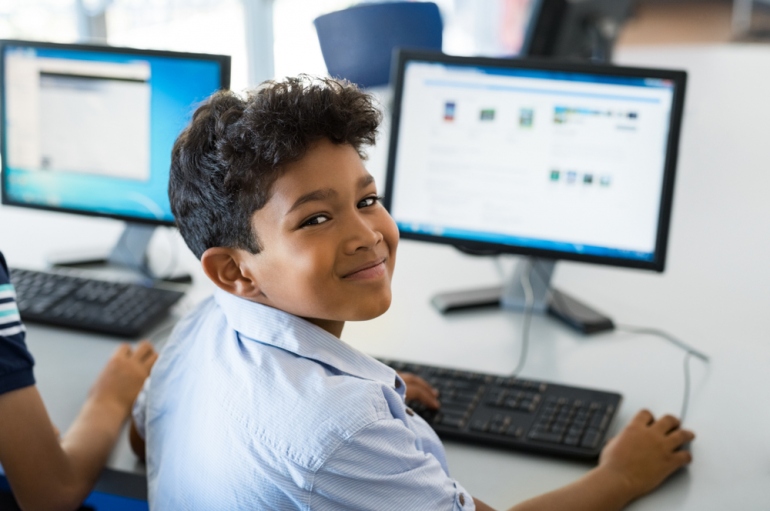The 21st century has often been referred to as the ‘Age of Technology’ – a befitting term given the fact that computers are found in every industry, in every institution, and every household. You’re reading this either on a computer screen or on your cellphone, aren’t you?
Given the fact that we can’t escape technology and the increasing use of it, it’s only fair to educate the upcoming generation about everything related to them. Primarily on how to interact with a computer.
The Computer Language
A computer is a machine, you are not. You can communicate with another human being using any one of the 6500 languages out there, but you can’t communicate with a computer in that same way.
I know what you’re thinking, and no typing something out on a keyboard isn’t the same as talking to a computer albeit it may be the same as interacting with one. Computers speak machine languages, and we speak human languages. Machine languages are binary, as in they’re an array of 1’s and 0’s arranged systemically to form a language. Understandably so, your child or even you can not possibly memorize a sequence of 1’s and 0’s each time you want a machine to save a file.
What then? You find a channel between the machine language and the human language – an assembly language. An assembly language is a gateway between the machine and the operator. The operator inputs information using whatever is convenient for him or her and the assembly language converts it into a form understood by the machine.
You’re probably thinking this is a little too difficult for your kid to grasp. The truth is you’ll be setting your child back if you think learning an assembly language is ‘too complicated’ for them. Children as young as 5 are being enrolled in computer introductory courses and courses for learning python for kids begin from ages 7 and up.
What is Python?
Python is a programming language that’s become a standard for computer learning education all around the globe. Leading companies such as Google, Microsoft, and Facebook use Python. The programming language uses intuitive commands following basic English syntax that makes it easier to interpret and implement by children.
An ideal python learning course for your child has to have the following:
- An exciting curriculum that both interests your child as well as drives them to move forward and do better.● A teaching team that focuses on your child’s strengths and weaknesses to make them achieve whatever it is they are capable of. ● A platform that creates a link between the two.With regards to a platform for learning python for kids, there are several online courses as well as in-person facilities where children can enroll to learn more about computers. Curious children who are constantly asking about the inner workings of machines and computers make ideal candidates for such courses.
Computational Thinking
Computational thinking is a problem-solving way of thinking. Instead of having your child read a book and then memorize it as if there would be a test on the subject matter, learning platforms for python target teaching children how to solve a complex array of problems – each being more difficult than the last.
This ‘step-ladder’ method allows children to assess problems differently. They break the problem down into manageable parts and look for patterns while focusing on important information and dismissing irrelevant details.
What’s just been described are the stepping stones of computational thinking:
- Decomposition● Pattern Recognition● AbstractionLastly, the child goes through the steps one at a time to come up with a solution – an algorithm. Learning how to interact with computers is a useful skill, not just for adults, but for children too. After all, they’re the ones who are moving on to living in the Age of Technology.







